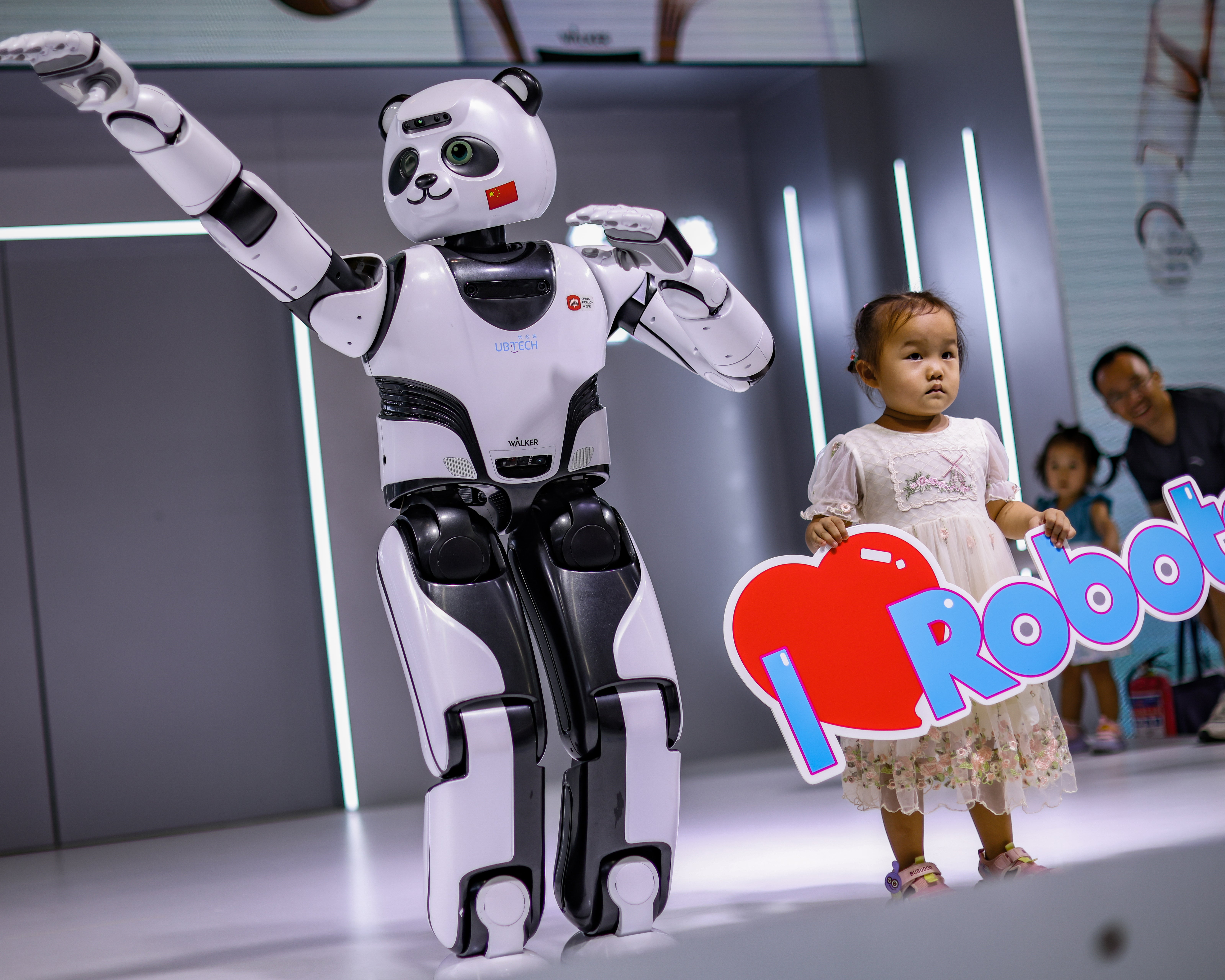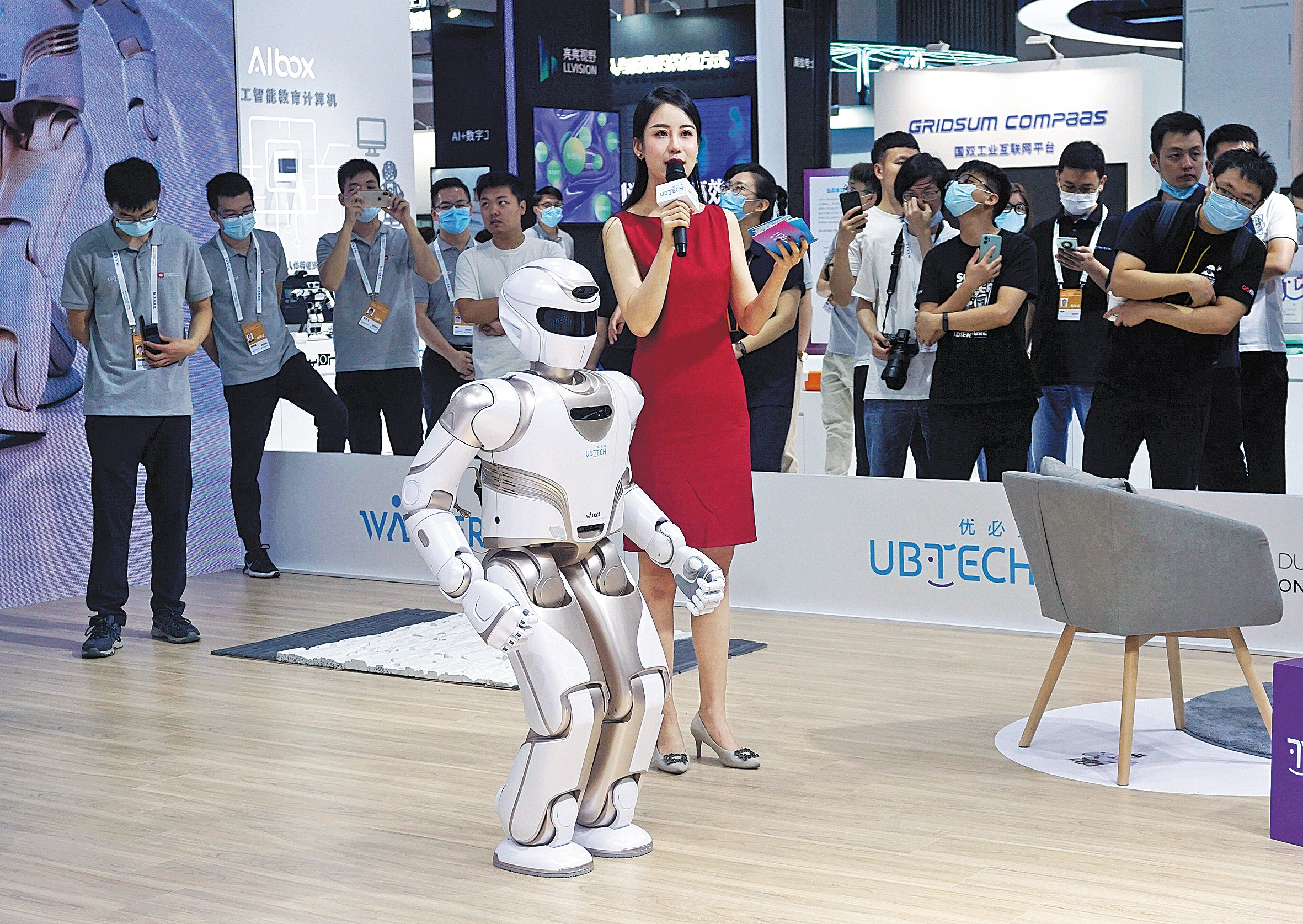Humanoid robots make grand entry
THE ARTICLES ON THESE PAGES ARE PRODUCED BY CHINA DAILY, WHICH TAKES SOLE RESPONSIBILITY FOR THE CONTENTS

As soon as Andrej Karpathy saw a video of a China-made, lanky, futuristic humanoid robot in August, he was quick to express his excitement.
“I want one. Or two. A few,” Karpathy said in a tweet, adding “Looks impressive – $90K, 47 kg. Yes, humanoid is the right form factor.”
One of the founding members of OpenAI, the US company that developed the widely popular generative artificial intelligence platform ChatGPT, Karpathy was referring to the Unitree H1, a 5.9ft tall, 104lb laser-radar-equipped humanoid developed by Unitree Robotics, a robotics startup in Hangzhou, Zhejiang province.
The video also showed that the robot – which can move about five feet per second – is capable of restoring its balance within two steps in the wake of an abrupt kick and can even slightly sidestep in advance upon sensing whether a human intends to lift a foot or not.
According to its developer, the Unitree H1’s maximum knee joint torque reaches 266 foot-pounds and each leg has five degrees of freedom.
Driven by technological advancements in AI, humanoid robots such as Unitree H1 are the hottest topic in the intelligent robotics industry today.
“Currently, new technologies, products and formats represented by humanoid robots and general artificial intelligence are thriving and becoming the pinnacle of global technological innovation, a new track for future industries, and a new engine for economic growth,” said Xu Xiaolan, China’s vice minister of industry and information technology.
Breakthroughs in AI, she said, have provided an important driving force for the innovative development of humanoid robots, and the world is experiencing a wave of integration between humanoid robots and general AI.
General AI refers to AI’s versatility in doing multiple tasks such as writing essays, checking programme bugs and making business plans. This differentiates it from previous narrow AI projects that excel in only one area.
The global humanoid robot market is expected to grow at a compound annual growth rate of 52.8 per cent from 2023 to 2030, according to market research company ReportLinker.
The China Electronics Society has also forecast that the market size of humanoid robots in China is expected to reach about 870 billion yuan (£98.7 billion) by 2030.
Robotics is considered the “crown jewel of manufacturing”, with humanoid robots being the ultimate goal for many across the industry. Compared with industrial robots that are valued for their specialised mechanical capabilities, the main challenge in developing humanoid robots is how to perfectly simulate human processes of perception, cognition, decision-making, and execution under various scenarios, experts said.

At the World Robot Conference 2023 in Beijing in August, humanoids took centre stage. UBTech Robotics, an AI and humanoid robotics company in Shenzhen, Guangdong province, showcased its Panda Robot and the Walker X, a large humanoid service robot.
The black-and-white “creature” named Youyou could introduce itself, pull off some tai chi moves and wield a calligraphy pen with a flourish. It was the subject of many photographs by visitors at the venue. It introduced visitors to China’s experience in smart cities, agricultural technologies and environmentally friendly practices.
“In the past six to eight months, a large number of new humanoid robots companies have emerged, indicating the public’s recognition of this industrial segment,” said Fu Chunjiang, vice president of UBTech Robotics.
Xiaomi Corp also showcased its emotion-detecting humanoid robot CyberOne. Measuring 5.6ft tall and weighing 115 lb, CyberOne supports up to 21 degrees of freedom of motion and achieves a real-time response speed that allows full human movement simulation.
The robot has a self-developed environment semantics recognition engine and a vocal emotion identification engine, enabling it to recognise 85 types of environmental sounds and 45 classifications of human emotion. CyberOne is able to detect happiness, and even comfort a user in times of sadness, the company said.
“The rise of the robot industry chain is closely related to the revolutionary wave of general AI,” said Chen Jia, a researcher at the International Monetary Institute of Renmin University of China. “Humanoid robots will be an industry field with great growth potential in the next decade.”
